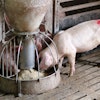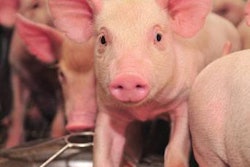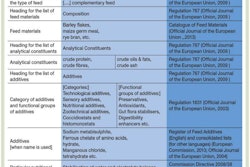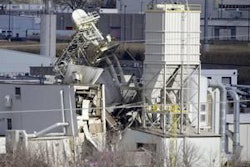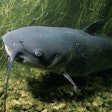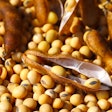This summer’s excessive rain has left the wheat harvest lagging behind and the crop in suboptimal condition, according to one grain management expert.
Dr. Max Hawkins, a nutritionist with Alltech’s Mycotoxin Management Team, said that the most common mycotoxin issue with wheat is deoxynivalenol (DON), produced by fusarium graminareum mold. This is the same mold that produces fusarium head blight (FHB), and the two are commonly associated in wheat. However, in some cases, DON can still be present even if FHB is not spotted.
Fusarium graminareum prefers extended wet periods or relative humidity more than 90 percent with temperatures from 59 to 85 degrees Fahrenheit. The maps for June rainfall and temperature indicate these factors have been in play across a major portion of the Grain Belt.
“In the 2014 wheat crop, there are reports from across the U.S. of DON levels ranging from two parts per million (ppm) to 14 ppm. There are areas where the wheat has been relatively free of DON and bushel test weights have been excellent,” Hawkins said. “However, the areas contaminated with DON are increasing as rainfall and temperature play a more significant role. There have been recent reports of wheat being rejected at grain terminals for DON levels ranging from five ppm to more than 10 ppm.”
Fungicide use
A standard alternative to corn in poultry and swine diets, wheat can be formulated into a diet on a lysine basis and provide similar nutritional value. Wheat can also be utilized to stretch a short corn supply or at certain times be a more economic replacement for corn. However, just as in corn, there can be a risk for mycotoxins.
“Wheat producers may have used fungicide to help prevent FHB but this requires proper timing and application rates to be more effective,” Hawkins said. “If there is variability in plant maturity across a field at application, this will result in fungicide being improperly timed for a percentage of the wheat crop. This will result in a percentage of the plants not being protected against FHB and at risk for DON formation.”
Tips for wheat growers
Because DON tends to be higher on light weight, damaged kernels or fines, Hawkins advises these tips for wheat growers:
- Be proactive by increasing fan speed on combines to 1,375 to 1,475 rpm and increasing shutter openings to 3.5 inches.
- When storing grain, it should be screened as it goes into storage and screened again when it is removed from storage.
- Screening should not be used for livestock feed.
-
If the wheat grain contains DON, the straw from the crop will contain DON also, so care must be used if the straw is destined for feeding or bedding.

